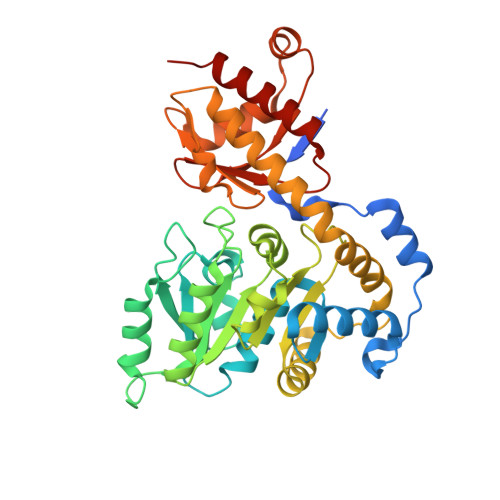One substrate many enzymes virtual screening uncovers missing genes of carnitine biosynthesis in human and mouse.
Malatesta, M., Fornasier, E., Di Salvo, M.L., Tramonti, A., Zangelmi, E., Peracchi, A., Secchi, A., Polverini, E., Giachin, G., Battistutta, R., Contestabile, R., Percudani, R.(2024) Nat Commun 15: 3199-3199
- PubMed: 38615009
- DOI: https://doi.org/10.1038/s41467-024-47466-3
- Primary Citation of Related Structures:
8PUM, 8PUS - PubMed Abstract:
The increasing availability of experimental and computational protein structures entices their use for function prediction. Here we develop an automated procedure to identify enzymes involved in metabolic reactions by assessing substrate conformations docked to a library of protein structures. By screening AlphaFold-modeled vitamin B6-dependent enzymes, we find that a metric based on catalytically favorable conformations at the enzyme active site performs best (AUROC Score=0.84) in identifying genes associated with known reactions. Applying this procedure, we identify the mammalian gene encoding hydroxytrimethyllysine aldolase (HTMLA), the second enzyme of carnitine biosynthesis. Upon experimental validation, we find that the top-ranked candidates, serine hydroxymethyl transferase (SHMT) 1 and 2, catalyze the HTMLA reaction. However, a mouse protein absent in humans (threonine aldolase; Tha1) catalyzes the reaction more efficiently. Tha1 did not rank highest based on the AlphaFold model, but its rank improved to second place using the experimental crystal structure we determined at 2.26 Å resolution. Our findings suggest that humans have lost a gene involved in carnitine biosynthesis, with HTMLA activity of SHMT partially compensating for its function.
Organizational Affiliation:
Department of Chemistry, Life Sciences and Environmental Sustainability, University of Parma, Parma, Italy.














